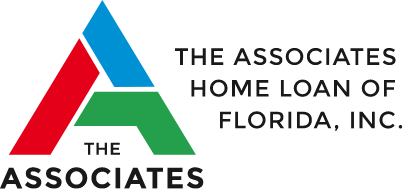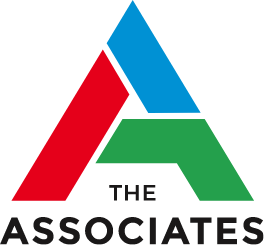
Refinancing a VA Loan to Conventional Terms
Post Author:
associateshome
Categories:
Date Posted:
May 15, 2023
Share This:
Refinancing your VA loan to conventional terms can be advantageous for many homeowners and real estate investors.
In this blog, we’ll discuss the basics of VA loans, including their benefits and eligibility requirements. We’ll also delve into why some borrowers choose to refinance from a VA loan to conventional financing and outline the steps involved in this transition.
Finally, we’ll provide valuable tips on successfully navigating through refinancing your mortgage from a VA-backed loan to more traditional options like fixed-rate or adjustable-rate mortgages.
By understanding all aspects of refinancing a first VA home loan to conventional financing, you will be better equipped to make informed decisions about your home’s financial future.
Assessing Your Financial Health and Credit Score
Before considering refinancing your VA loan to a conventional one, it’s essential to confirm your credit score and add up your monthly debt payments. This step will help you determine if you meet the stricter credit qualifications required for conventional loans with Fannie Mae and Freddie Mac compared to VA loans. To ensure that you qualify for a conventional refinance, it’s essential to check your credit history and calculate your debt-to-income ratio.
Check Your Credit Score and History
To qualify for conventional loans or a refinance, most lenders require borrowers to have a minimum FICO score of 640 or higher. In addition, you can obtain free copies of your credit report from each of the three major bureaus (Equifax, Experian, and TransUnion) once per year through AnnualCreditReport.com.
Calculate Your Debt-to-Income Ratio (DTI)
The DTI ratio is a significant factor that loan providers contemplate when assessing mortgage applications. To calculate DTI, divide all monthly debts by gross monthly income, which includes payments like:
- Mortgage payments (principal, interest, taxes, and insurance)
- Minimum credit card payments
- Car loans or lease payments
- Student loan payments
- Alimony or child support obligations (if applicable)
The resulting percentage represents your DTI. Most conventional lenders prefer a DTI of 43% or lower for borrowers seeking to refinance their VA loan. A DTI ratio of 43% means you spend a maximum of 43% of your monthly income on debt repayments. This means that if you take home $4,000 per month, your monthly repayments will total at most $1,720. This includes the prospective monthly repayments on your mortgage.
Knowing your monthly budget and what kind of interest terms are accessible is vital for making an educated choice.
Get a Competitive Interest Rate for Your Loan
The first step to refinance a VA loan into a conventional loan is to apply. The Associates Home Loan of Florida, Inc. has a lot of experience working with borrowers who may have past challenges with their credit, multiple mortgages, or need alternative ways to prove their income. So don’t let your existing finances hold you back.
We can also recommend things you can do to help improve your credit score. We are here to help! Our team of expert professionals will help you get the loan that fits your needs.
Evaluate Closing Costs and Fees
Evaluating closing costs and additional fees associated with your conventional loan product is vital. These expenses can significantly impact the overall cost of refinancing your current VA loan into a conventional loan.
Closing costs may include items such as:
- Loan origination fees
- Formal appraisal fees
- Title insurance and search fees
- Recording and property transfer taxes
- Credit report charges
You could try negotiating certain reduced or waived closing costs in exchange for a higher interest rate. This can be an attractive option if you want to minimize upfront expenses; however, it’s essential to weigh the long-term implications of accepting such an arrangement carefully.
Compare each loan product’s interest rates, closing costs, and fees to determine which loan best fits your needs. More on loan products in a moment!
Consider Home Equity and Private Mortgage Insurance
When refinancing your VA loan to a conventional one, it’s essential to evaluate the potential benefits of home equity and private mortgage insurance (PMI).
If you have at least 20% equity built up in your property due to appreciation or improvements made over time, you could refinance into a conventional mortgage without having to pay PMI on top of your monthly payment amount. This can result in significant savings over time.
Determine Current Home Value through Appraisal or Market Analysis
To determine if you meet the 20% equity threshold required to avoid paying PMI, start by assessing the current value of your home. You can do this by obtaining an appraisal from a licensed appraiser or conducting a market analysis using online tools like Zillow’s Home Value Estimator.
Calculate Potential Savings by Eliminating PMI
In some cases, homeowners may find they stand to save a considerable amount of money by refinancing their VA loan into a conventional mortgage without PMI.
- Step 1: Determine the difference between your current loan balance and what you would owe on a new conventional mortgage without PMI (typically requiring at least 80% Loan-to-Value ratio).
- Step 2: Calculate the cost of continuing with your existing VA loan versus switching to a conventional option without PMI. To do this, consider factors such as interest rates (Bankrate is a helpful resource), monthly payments, and the remaining term on your current loan.
- Step 3: Compare these costs to determine if refinancing would result in significant savings over time. Keep in mind that while eliminating PMI can be beneficial, it’s essential to weigh this against any potential increases in interest rates or other fees associated with conventional loans.
Once you have determined your current home value and calculated potential savings by eliminating PMI, it is crucial to explore lower interest rate options with conventional loans. Comparing fixed-rate vs. adjustable-rate mortgages can help you analyze the potential long-term savings.
Exploring Conventional Loan Product Options
If you possess substantial home equity in your residence, it is possible to secure lower interest terms through customary loan types such as conforming loans or ARMs. By refinancing from a VA Loan to these types of products, homeowners can take advantage of better terms based on their financial situation.
In this section, we will discuss the differences between fixed-rate and adjustable-rate mortgages and how they can potentially save you money in the long run.
Compare Fixed-Rate vs. Adjustable-Rate Mortgages
Fixed-rate mortgages offer stability by maintaining the same interest rate throughout the life of the loan. This means your monthly mortgage payment remains consistent, making it easier to budget for other expenses. On the other hand, adjustable-rate mortgages (ARMs) have an initial fixed period where rates are typically lower than those offered by fixed-rate loans. After this introductory period ends, usually 5-10 years, the rate adjusts periodically based on market conditions.
Pros of Fixed-Rate Mortgages:
- Predictable payments
- Protection against rising interest rates
- Potentially lower initial payments due to discounted starting rate
- Opportunity for reduced costs if market trends lead to decreased future adjustments
- Simplicity
Cons of Fixed-Rate Mortgages:
- Higher initial interest rate compared to ARMs
- Limited flexibility if market conditions change favorably
- Uncertainty regarding future rate adjustments
- Potential for increased payments if rates rise
Analyze Potential Long-Term Savings with a Lower Interest Rate
When refinancing a VA loan to a conventional loan, it’s essential to consider the long-term savings that could result from lower interest rates. To do this, you’ll need to compare your current VA loan terms and conditions with various conventional loans. Associates Home Loan, Inc., can help you determine whether refinancing is worth the effort and expense, but here are a few pointers:
- Determine Your Break-Even Point: Calculate how long it would take for your monthly savings on a new mortgage payment due to a lower interest rate to offset any closing costs associated with refinancing. Refinancing may be advantageous if you plan on staying in your home beyond this break-even point.
- Evaluate Loan Term Options: When comparing different refinance offers, consider both 15-year and 30-year term options. While shorter terms typically come with higher monthly payments, they also often have a lower interest rate, saving you money over time compared to longer-term loans.
- Analyze Lifetime Savings: Use an online calculator or consult with a financial professional to estimate the total amount of money saved over the life of each potential refinance option based on factors such as interest rate differences and the remaining years left on your current mortgage term.
Examining the potential of conventional loan rates may be advantageous in terms of cost-saving over time, so it is beneficial to compare fixed and variable mortgages.
Now that you’ve explored your options, let’s look at the next steps for your refi: gathering the required documents and obtaining a VA Certificate of Eligibility (COE)!
Preparing Documentation for the Refinancing Process
Whether streamlining an existing ARM product or seeking out more traditional avenues, gathering the necessary paperwork ahead of time can help make the refinancing process faster and result in a favorable loan offer. In this section, we’ll discuss what documents you need to gather and how to obtain your VA Certificate of Eligibility (COE).
Gather Initial Financial Documents
To ensure a smooth refinancing process, it’s essential to have all relevant financial documents readily available. Some common items that lenders may request include:
- At least 30 days of pay stubs: These serve as proof of income and help lenders determine if you can afford the new loan payments.
- Bank statements: Lenders often require at least two months’ worth of bank statements from checking and savings accounts. Savings often have to be “sourced and seasoned” for you to use them as official assets.
- Tax returns: Lenders may ask for two years’ worth of tax returns to verify your income history.
- Credit report: As discussed earlier, while most lenders will pull your credit report themselves, it’s still a good idea to review it beforehand so you know of any potential issues. You don’t need any surprises about an incorrect collection lurking on your credit report that you’ll need to fix before moving forward!
Obtain Your VA Certificate Of Eligibility (COE)
In addition to gathering financial documents, you’ll need a valid COE when refinancing from a VA loan into a conventional loan or vice versa. The COE is proof of your eligibility for VA-backed loans and is required by most lenders. There are several ways to obtain a COE:
- Online through the eBenefits portal: If you have an account with the Department of Veterans Affairs (VA) eBenefits website, you can request your COE online by visiting their homepage.
- By mail using VA Form 26-1880: You can also apply for a COE by completing and mailing in VA Form 26-1880, available on the VA’s website. However, this method may take longer than applying online.
- Via your lender: Many lenders specializing in VA refinance loans have access to an automated system that allows them to obtain a borrower’s COE quickly.
Gathering all necessary documentation will help streamline the refinancing process and ensure you’re well-prepared when discussing loan options with potential lenders. Having everything ready will make you one step closer to securing a conventional refinance that meets your financial needs.
Considering Refinancing Back into a New VA Loan
Here’s something that may not have occurred to you: in some cases, it may be beneficial to refinance from a conventional loan back into a VA loan if current property values are low and rates on the latter option prove significantly lower in comparison.
Potential benefits of returning to a VA-backed loan:
- No PMI: Unlike conventional loans, VA loans do not require PMI, saving homeowners hundreds of dollars per month.
- Favorable interest terms: Due to government backing, VA loans often have a lower interest rate than a conventional loan. Over time, this can result in considerable savings.
- No prepayment penalties: With a VA loan, you won’t face penalties for paying off your mortgage early or making extra payments towards the principal balance.
- Seller concessions allowed: In some instances, sellers might agree to pay part or all of the buyer’s closing costs when using a VA loan. This could help reduce out-of-pocket expenses during refinancing.
Contact Us Today to Discuss Your Refinancing Options
Working with a reputable lender like The Associates Home Loan of Florida, Inc. can help you navigate the complexities of refinancing and make an informed decision based on your financial situation, goals, and preferences. Our friendly team of experts will assist in evaluating various loan products to determine which option best suits your needs while providing support throughout the process, from application submission to funding.
The Associates Home Loan of Florida, Inc. specializes in bad credit loans, refinancing options such as this one, hard money loans, and more. Let The Associates Home Loan of Florida, Inc. help you refinance your VA loan to a conventional one and save money today! Our experienced team will guide you through the process quickly and easily.
Recent Posts
What is a Private Mortgage? Your Guide to Private Mortgage Lending
When you need money for a project, investment, or renovation, you need it quickly and on your own flexible terms. At The Associates Home Loan, we work to create a seamless loan experience, securing loanRead More
Private Lender vs. Bank Mortgage: Everything You Need to Know
Are you ready to buy a new home but can't get through the strict lending requirements of a conventional mortgage? Or maybe you're a self-employed entrepreneur, have less than stellar credit, or are venturing intoRead More
How to Get a Joint Mortgage With One Bad Credit: Tips for Couples
Please Note: - Associates Home Loan of Florida does not provide personal loans. - We do not provide private mobile home loans. - We are only operating in and providing property loans for theRead More









